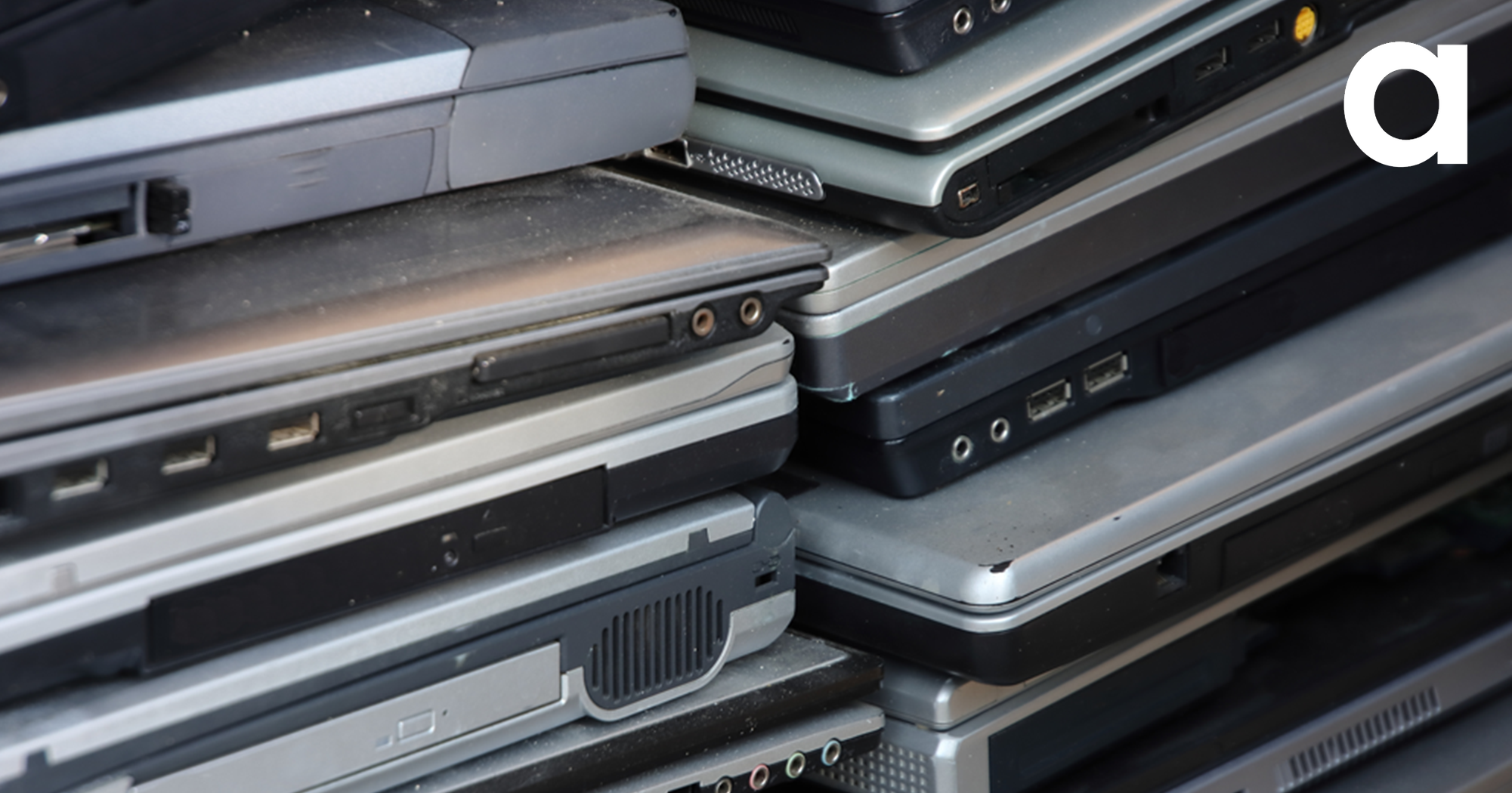
07 Feb Reuse or Recycle. That is the question.
The constant release of newer and more sophisticated IT hardware leads to a pressing concern: what to do with the outdated or unwanted IT equipment that is left in its wake? The answer lies in responsible disposal methods, with a choice between two sustainable options: reuse or recycle.
The Dilemma of Electronic Waste (e-waste)
Technology has undeniably improved our lives but it has also given rise to a significant environmental issue – electronic waste. Discarded computers, printers, smartphones and other IT equipment contribute to the growing e-waste problem. These devices often contain hazardous materials like lead, mercury and cadmium, posing environmental and health risks when improperly disposed of.
Option 1: Reuse
1.1 Extending the Lifespan
Reusing unwanted IT kit stands as a commendable choice for those looking to reduce their environmental footprint. Many devices still possess functional components that can be salvaged and repurposed. By extending the lifespan of these gadgets, we not only conserve resources but also minimise the need for new production.
1.2 Bridging the Digital Divide
Donating or refurbishing IT equipment for reuse can also bridge the digital divide. Many communities, especially in developing regions, lack access to the latest technology. By contributing used devices, we empower individuals and communities with the tools they need for education, communication and economic development.
1.3 Environmental Benefits
Choosing reuse over disposal lessens the burden on landfills. It curtails the need for manufacturing new products, reducing the overall energy consumption and greenhouse gas emissions associated with production. In essence, reusing IT hardware is a sustainable practice that aligns with the principles of a circular economy.
Option 2: Recycle
2.1 Responsible Disposal
Recycling is another eco-friendly approach to managing unwanted IT kit. Recycling facilities are equipped to dismantle and process electronic devices, separating recyclable materials from hazardous components. This ensures that valuable resources are extracted and reused while minimising environmental harm.
2.2 Resource Recovery
Recycling IT hardware allows for the recovery of valuable materials such as metals, plastics and glass. These extracted resources can then be used in the manufacturing of new electronic devices, reducing the demand for materials. This closed-loop system contributes to a more sustainable and circular economy.
2.3 Mitigating Environmental Impact
Proper recycling helps prevent the release of hazardous substances into the environment. By keeping harmful materials out of landfills, we mitigate the potential pollution of soil and water, safeguarding ecosystems and the health of communities surrounding disposal sites.
The Decision-Making Process
When faced with the decision of whether to reuse or recycle unwanted IT hardware, several factors come into play. The functional status of the devices, the potential for refurbishment and the overall environmental impact must be carefully considered.
3.1 Assessing Functionality
Before deciding, it’s essential to evaluate the functionality of the IT hardware. Devices that are still operational and can serve a purpose, either in their current state or after refurbishment, are prime candidates for reuse. Non-functional or obsolete equipment may be better suited for recycling.
3.2 Environmental Impact Analysis
Consider the overall environmental impact of both options. While reuse is generally more sustainable, recycling becomes imperative when devices are beyond repair or upgrading. Balancing the environmental benefits of extending the lifespan versus the responsible disposal of irreparable equipment is crucial.
3.3 Legal and Ethical Considerations
Compliance with local and international regulations for electronic waste disposal is vital. Ensuring that the chosen method aligns with legal standards and ethical practices contributes to a responsible and sustainable approach.
Conclusion
In the ever-evolving landscape of technology, the responsible disposal of unwanted IT hardware is a shared responsibility. Whether opting for reuse or recycling, the key lies in making informed decisions that prioritise environmental sustainability and societal well-being. By choosing to extend the life of devices through reuse or ensuring their responsible recycling, individuals and businesses alike can play a pivotal role in mitigating the environmental impact of electronic waste and contributing to a more sustainable future.
Click here to book some time for a chat


